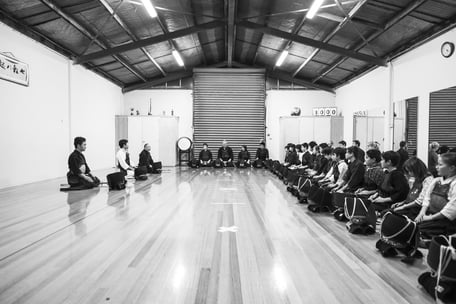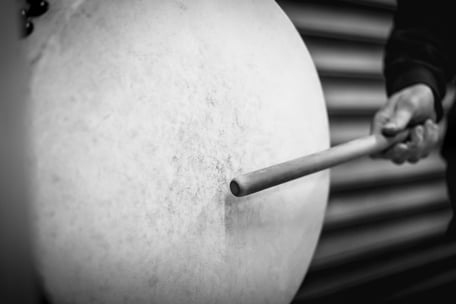Kendo Terminology

This aspect of Kendo trainings can be daunting for new members. Don't be afraid to ask what something means.
Etiquette
- Shitsurei shimasu - Said when entering or leaving the dojo
- Hai - Yes
- Hajime - Begin/Start
- Rei - Bow
- Otagai ni rei - Bow to each other
- Shomen ni rei - Bow to shomen
- Onegai shimasu - Please
- Arigato gozaimashita - Thank you
Counting
- 1 ichi
- 2 ni
- 3 san
- 4 shi
- 5 go
- 6 roku
- 7 shichi
- 8 hachi
- 9 kyu
- 10 ju

Useful words
- Ashi-sabaki - Kendo footwork
- Bokuto - The wooden sword used for kata. Also called a bokken. The bokuto is about the same size & shape (i.e. it is curved) as a katana.
- Dojo - The place of practice (literally "Hall of the Way")
- Hakama - The loose trousers worn by kendoka
- Hajime - Begin/start
- Kamae - Stance/posture
- Kamae to - The order given to draw the shinai
- Kata - A set of ten forms or patterns practiced by kendoka. No contact is made on either kendoka with the bokuto. High dan grades (7th, 8th) have been known to perform kata with live blades.
- Keikogi - The jacket by kendoka. Also known simply as gi.
- Kendoka - Kendo practicioner
- Kiai - The vocalisation made when performing a cut. This represents the attacker's spirit. The louder, the better.
- Mokuso - The mokuso position is taken while sitting in seiza. It is a time for meditation before and after training. Sitting in seiza, half-close your eyes & focus on a point on the floor about a metre in front of you. Rest your hands in your lap, with one resting on the other, and your palms turned upward. Your thumbs should touch at their tips, forming a circle.
- Rei - To bow. There are two types of rei; standing and seated. When standing, bow from the waist. If facing kamiza/shomen, allow your eyes to go to the floor and bend at the waist to a 30 degree angle. If facing an opponent, keep your eyes on your opponent and bend at your waist to a 15 degree angle. Keep your back and neck straight in both cases. For a seated rei (from seiza), slide both hands down your thighs, palms down, to the floor making a triangle of the thumbs and forefingers. Bow so that your face is just above your hands but do not show the back of your neck or lean too far forward.
- Seiza - A kneeling position, sitting on your feet with your big toes touching. If you do have occasion to sit cross-legged, then cover your feet with your hakama.
- Sensei - The teacher. The meaning is deeper than it appears. It means "one who is born before". In New Zealand a kendoka who has attained the grade of 6th Dan should be addressed as 'sensei'. To address a teacher as sensei is to acknowledge his/her experience and insight.
- Sempai - Senior students
- Yame - Stop
